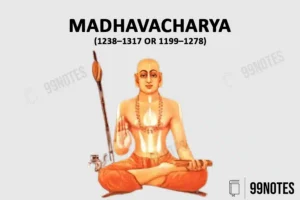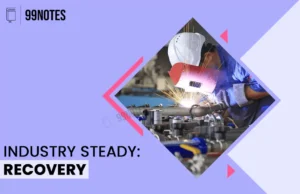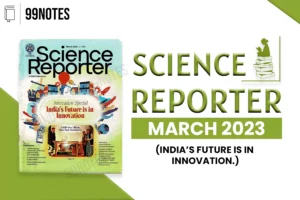22 May 2023 : The Hindu Editorial
THE HINDU EDITORIAL
22-May-2023
Daily Current Affairs For UPSC ,The Hindu Editorial Summary
1. Delhi’s quest for administrative autonomy is hostage to the BJP – AAP rivalry.
Topic: GS2 – Federal Issues
Context:
- The Centre has overturned a Supreme Court judgment through an ordinance, which held that the elected government of Delhi had executive and legislative powers over its officials.
- The Aam Aadmi Party (AAP) government in Delhi has decided to challenge the Ordinance, while the BJP government at the Centre has moved the Court to review its judgment.
Issue:
- The National Capital Territory of Delhi Act created conflicts between the Centre and the elected government of Delhi over administrative powers.
- The Supreme Court judgment stated that Union Territories with a Legislative Assembly are comparable to States, and their government’s executive powers extend to matters on which they can make laws.
- The absence of a law on services and lack of oversight by elected representatives over officials were pointed out by the Court.
- The Ordinance creates the National Capital Civil Service Authority, removing the basis of the judgment and reclaiming powers by the Centre.
- The political intent of the Centre’s move is a pertinent issue, as it has been aggressive and less cooperative with elected governments at lower levels.
- The unique administrative character of Delhi as the national capital should be maintained, and voters should not be disenfranchised.
The Ordinance-making power of the President of India:
The President of India has the power to promulgate ordinances under Article 123 of the Indian Constitution. Here are some key points about the ordinance power of the Indian President:
- Definition: An ordinance is a law or legislation that is issued by the President on the recommendation of the Union Cabinet when Parliament is not in session. It has the same effect as an Act of Parliament.
- Circumstances for Promulgation: The President can issue an ordinance when there is an urgent need to enact a law, and immediate action is required. It is typically done when Parliament is not in session, and the matter must be resolved before the next session.
- Legislative Authority: The power to promulgate ordinances is derived from the legislative authority vested in the President. The President can issue ordinances on subjects over which Parliament has the power to legislate.
- Temporary Nature: Ordinances have a temporary nature and are valid for a maximum of six weeks from the reassembly of Parliament. They need to be approved by both houses of Parliament within this period to become permanent law.
- Same Legal Force: An ordinance carries the same legal force as an Act of Parliament. It has the power to amend, repeal, or enact laws, similar to the legislative process in Parliament.
- Constitutional Limits: The President’s power to promulgate ordinances is subject to certain constitutional limits. The President cannot issue an ordinance if a similar bill has been introduced and is pending in Parliament or if the matter falls outside the legislative competence of Parliament.
- Judicial Review: The power to promulgate ordinances is subject to judicial review. The courts can examine the validity and legality of an ordinance and strike it down if it violates the Constitution or the limits prescribed by law.
Issues with the Ordinance making power of the President:
- Bypassing Parliament: Ordinances allow the executive to bypass the normal legislative process. They can be promulgated when Parliament is not in session, depriving elected representatives of the opportunity to debate and scrutinize proposed laws. This undermines the principle of separation of powers and reduces legislative oversight.
- Lack of Democratic Accountability: Ordinances are promulgated by the President, who is the head of the executive branch. This concentration of power in the hands of the executive raises concerns about democratic accountability. Elected representatives have limited or no involvement in the decision-making process for ordinances.
- Potential Misuse: There is a risk that the ordinance-making power can be misused by the executive to push through controversial or partisan measures without sufficient scrutiny. This may be done for political gain or to bypass opposition within Parliament.
- Limited Public Participation: The process of promulgating ordinances does not involve extensive public consultation or deliberation, as is the case with the regular legislative process. This limits the opportunity for public input and may result in laws being enacted without considering diverse perspectives or addressing potential undesired consequences.
2. Judging Jallikattu: On the Supreme Court verdict.
Topic: GS1 – culture, GS2 – fundamental Right
Context:
- The Supreme Court of India has upheld legislative changes made by the Tamil Nadu Assembly, exempting the traditional sport of Jallikattu from the law against animal cruelty.
Issue:
- The amendments were made in 2017, six years after a Court-ordered ban on Jallikattu, following an upsurge in popular support for the sport.
- The Court recognized the cultural sentiment behind Jallikattu, which involves men trying to control raging bulls, and accepted the legislature’s view that it is a sport conducted to follow tradition and culture.
- The Court found that the fresh regulations minimize the potential for cruelty and pain in Jallikattu, which formed the basis of the earlier ban.
- While the Court deferred to the cultural sentiment underlying the legislative scheme, it emphasized that organizers and governments still have the responsibility to prevent cruelty to animals and ensure safety for participants and spectators.
- The Court suggested mandating protective gear for participants and enforcing rules for proper barricades to ensure safety.
The verdict does not dilute the importance of animal rights, and cultural assertion can coexist with kindness to animals and adherence to safety norms.
3. Hijacking G-20’s civil society forum.
Topic: GS2 – International Relations
Issue:
- The C-20 (Civil Society 20) process, which is the official civil society engagement of the G-20, has been co-opted by the ruling party in India to further its own politico-religious agenda.
- The coordination and participation in the C-20 process are dominated by members of a single religion, raising concerns about inclusivity and discrimination.
- The focus of the G-20 on neoliberal economics is being masked by a “green economy” narrative, with pliable NGOs being used to legitimize it.
- The independence and critical role of forums like C-20 have been undermined, with limited space for dissent and independent voices.
- The Indian government’s use of the G-20 presidency for political and electoral gains has led to a distorted portrayal of the country, while social indicators remain poor.
- The ruling party’s double-speak, presenting a positive image while cracking down on dissent and undermining environmental protection, is evident in G-20 slogans.
- Participating CSOs in C-20 need to consider whether they will legitimize this abuse of power or challenge it.
4. India as a Quad-led biomanufacturing hub
Topic: GS2 – IR, GS3 – Biotechnology
Issue:
- The Quad (Australia, India, Japan, and the United States) should establish a biomanufacturing hub in India to enhance cooperation and address supply-chain vulnerabilities.
- Biomanufacturing, which uses living systems to produce molecules and materials on a commercial scale, has the potential to transform the global industrial system.
- India’s National Biotechnology Development Strategy aims to make the country a “Global Biomanufacturing Hub” by 2025, but it requires external support, particularly from Quad partners.
- The Quad nations possess complementary strengths that can be leveraged to create the hub, including funding capability, advanced biotechnology innovation ecosystems, intellectual property, skilled manpower, and potential for affordable scale.
- India has existing infrastructure, pharmaceutical manufacturing expertise, and a strong research output in biomanufacturing. It also has potential in low-cost biomanufacturing.
- The proposed hub can help facilitate technology transfer, connect investors, establish a biomanufacturing fund, and reduce India’s dependency on China.
- Workforce quality in India’s biomanufacturing sector needs improvement, and training facilities can be established in universities around the Quad hub with experts from Quad countries providing training.
- The hub can serve as a central platform for cross-Quad collaboration, harmonize regulations and data-sharing, and secure supply chains for Quad nations.
- The hub in India can capitalize on the economic potential of biomanufacturing and help the Quad compete in this key area.
For Enquiry

22 May 2023 : The Hindu Editorial

20 May 2023 : PIB

20 May 2023 : The Hindu Editorial

20 May 2023 : Daily Current Affairs

Madhavacharya (1238–1317 or 1199–1278)

Industrial Infrastructure UPSC

Chapter 9: Industry Steady: Recovery

Science Reporter: India’s Future is in Innovation.

19 May 2023 : PIB

19 May 2023 : The Hindu Editorial
The Hindu 22 May 2023 : The Hindu Editorial DAILY CURRENT AFFAIRS
22-May-2023
Daily Current Affairs For UPSC ,Daily Current affairs of The hIndu…
PIB 20 May 2023 : PIB PRESS INFORMATION BUREAU
20-May-2023
Daily Current Affairs For UPSC ,The PIB ( Press Information Bureau…
The Hindu 20 May 2023 : The Hindu Editorial The Hindu Editorial
20-May-2023
Daily Current Affairs For UPSC ,The Hindu Editorial Summary
Facebook-f
Twitter
Youtube
1. Among…
Daily Current Affairs 20 May 2023 : Daily Current Affairs DAILY CURRENT AFFAIRS
20-May-2023
Daily Current Affairs For UPSC ,Daily Current affairs of The hIndu…
evaluation of the rajput states upsc Madhavacharya (1238–1317 or 1199–1278) Madhavacharya was born in a Brahmin family in the Udupi district of Karnataka.
Madhavacharya propounded…
Infrastructure Industrial Infrastructure UPSC Infrastructure is the set of provisions that serve a country, city, or other area. It encompasses…
Economic Survey Chapter 9: Industry Steady: Recovery Synopsis
The Indian industry is central to the Indian economy, contributing to about 30% of the total…
Science Reporter Science Reporter: India’s Future is in Innovation. Article 1: Make Education more creative:
Context:
India is home to the world’s largest youth population….
PIB 19 May 2023 : PIB PRESS INFORMATION BUREAU
19-May-2023
Daily Current Affairs For UPSC ,The PIB ( Press Information Bureau…
The Hindu 19 May 2023 : The Hindu Editorial The Hindu Editorial
19-May-2023
Daily Current Affairs For UPSC ,The Hindu Editorial Summary
Facebook-f
Twitter
Youtube
1. A…





